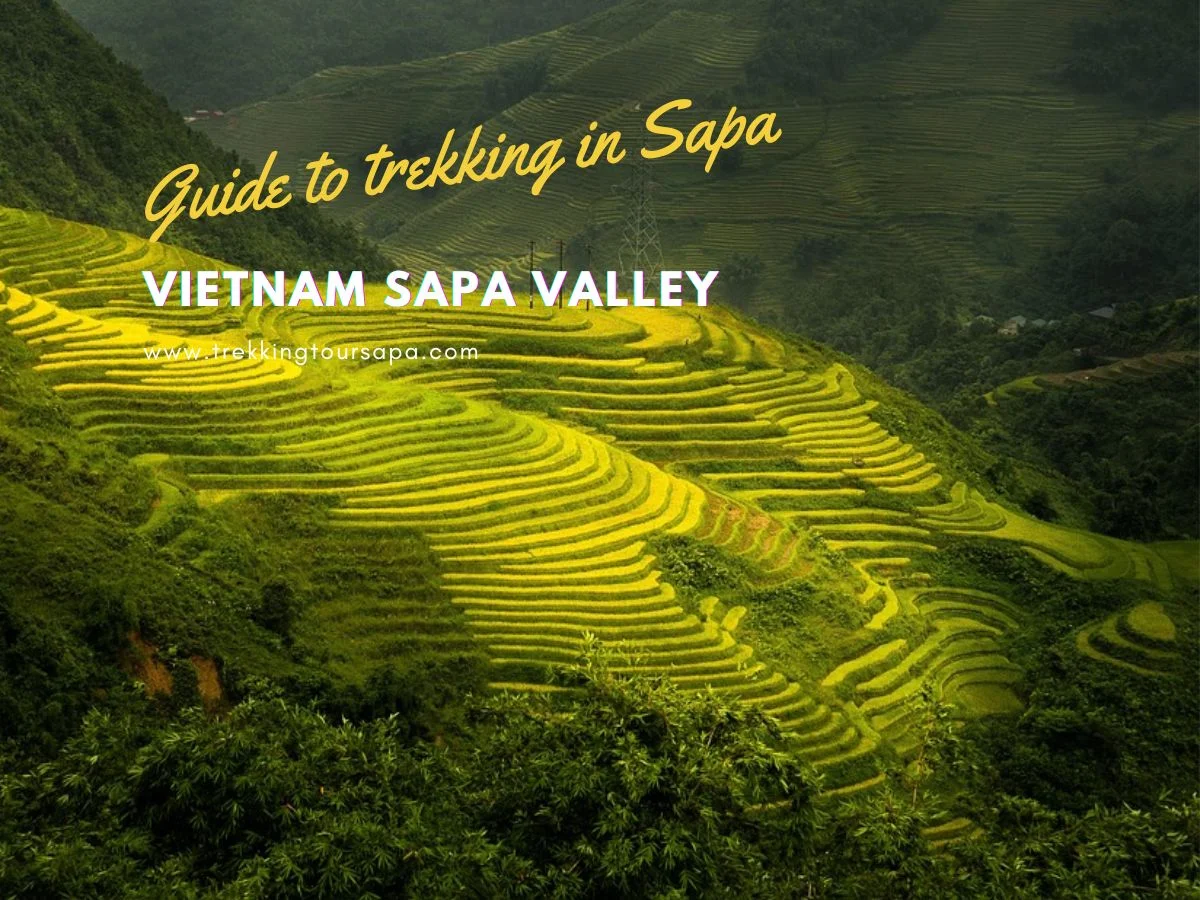Welcome to the stunning Vietnam Sapa Valley, a magical land of lush greenery and breathtaking vistas. If you’re looking for an escape from the hustle and bustle of everyday life, then look no further than this majestic destination. Nestled in the northwest region of Vietnam, the Sapa Valley is home to some of the most awe-inspiring landscapes on earth. From cascading rice terraces to misty mountain peaks, this hidden gem offers visitors a chance to reconnect with nature and rediscover their sense of freedom. Whether you want to trek through remote villages or simply relax in one of its charming towns, Vietnam’s Sapa Valley has something for everyone.

So pack your bags, leave your worries behind, and get ready for an adventure like no other!
Table of Contents
ToggleExploring The Rice Terraces
As you stroll through the verdant rice terraces of Sapa Valley, it’s easy to get lost in the lush beauty surrounding you. The vast expanse of golden fields stretching out before you is nothing short of breathtaking, while the undulating hills and misty mountains on the horizon add a sense of awe-inspiring grandeur to your experience.
But make no mistake – this isn’t just about enjoying the scenery. As you walk amongst these emerald green paddies, you’re also embracing the culture and history of Vietnam’s indigenous hill tribes. From learning about their ancient cultivation techniques to discovering how they live off the land, this is an opportunity to truly immerse yourself in a way of life that has remained unchanged for centuries.
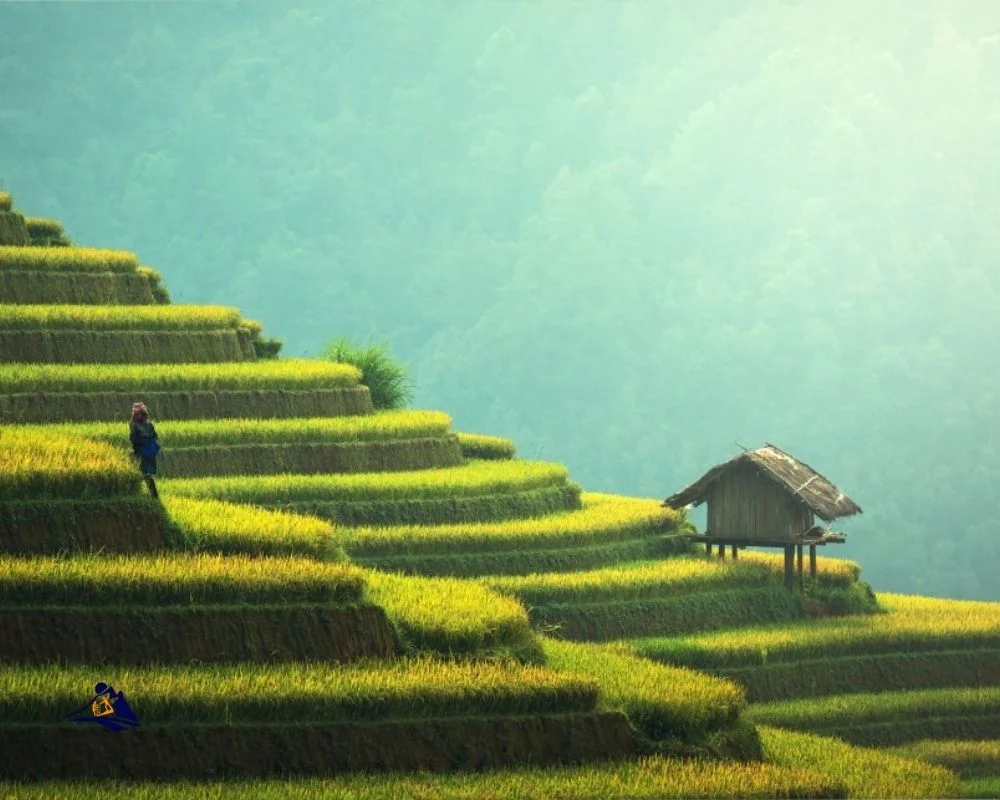
And as you pause to take it all in, breathing in the fresh mountain air and feeling at one with nature, there’s a palpable sense of freedom that washes over you – a reminder that sometimes, getting away from it all can be exactly what we need.
And yet, as enticing as those rolling hills may be, there’s still so much more to explore beyond them. So if you’re ready for adventure and eager to discover what lies around each corner, join us as we journey deeper into Sapa Valley – trekking through remote villages, meeting locals who will quickly become friends, and uncovering hidden gems that few others have ever laid eyes on before.
Are you ready?
Let’s go!
Trekking Through Remote Villages
As you trek through the remote villages of Vietnam’s Sapa Valley, you can’t help but feel a sense of awe and wonder. The stunning scenery, coupled with the welcoming hospitality of the locals, makes for an unforgettable experience. You’ll find yourself lost in thought as you discover temples hidden among rice paddies and hike along winding trails that lead to breathtaking views.
But it’s not just about the sights – it’s also about immersing yourself in a culture vastly different from your own. As you interact with the villagers, you’ll gain insight into their way of life and develop a newfound appreciation for simplicity. With each step, you’ll feel more connected to nature and those around you.

And when night falls, there’s nothing quite like gathering around a bonfire under the stars with new friends made on this journey.
- Discover hidden gems off-the-beaten-path
- Learn traditional weaving techniques from local artisans
- Try homemade rice wine brewed by village elders
- Experience authentic homestays with local families
As much as one can soak up all that’s offered by trekking through these remote villages, no trip would be complete without experiencing local cuisine.
Experiencing Local Cuisine
When it comes to experiencing a new culture, there is no better way than through its cuisine. In Sapa Valley, tasting street food and trying local dishes are must-do activities for any traveler seeking an authentic experience. From savory pho soup to crispy banh mi sandwiches, the flavors of Vietnam will tantalize your taste buds. One popular spot for sampling local delicacies is the Bac Ha Market. Here you can find everything from freshly caught fish to exotic fruits like dragon fruit and rambutan. Take a stroll through the bustling market stalls and indulge in some of the most delicious treats that Sapa has to offer.
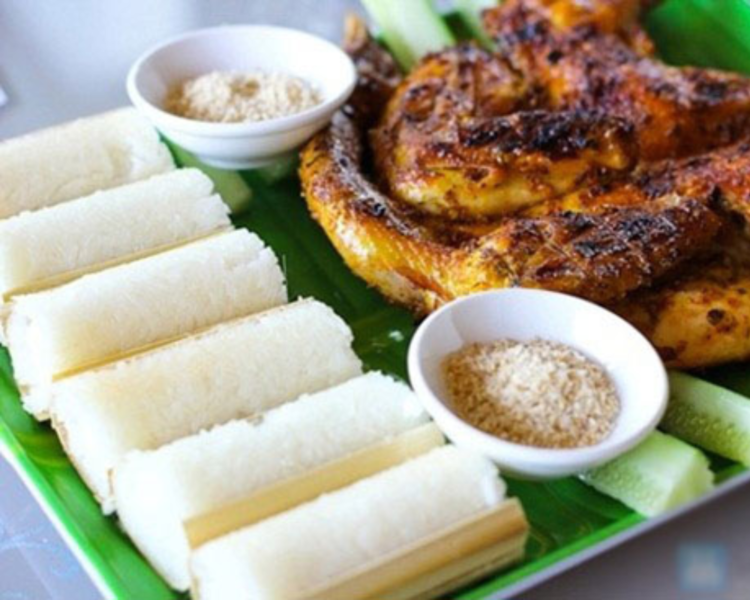
And if you’re feeling adventurous, be sure to try some grilled buffalo meat or sticky rice cooked in bamboo tubes – two dishes that are unique to this region. As much as food is an important part of cultural immersion, so too is meeting and learning about the people who create these culinary delights.
Next up on our journey through Sapa Valley, we’ll delve into visiting the minority people and discovering their rich traditions and customs.
Visiting The Minority People
As you venture into the minority villages of Sapa Valley, you will be struck by the rich tapestry of cultures that exist within this region. It is a place where centuries-old traditions are still upheld and where language barriers can often feel insurmountable. However, it is precisely in these moments of disconnect that true connections can be forged.
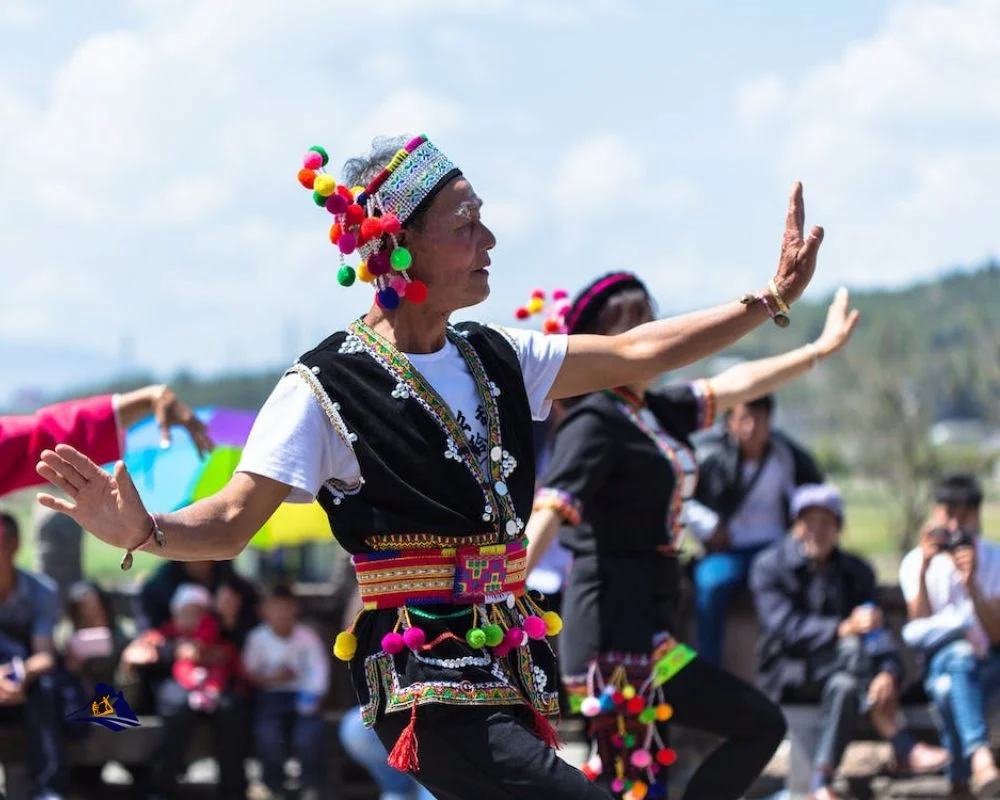
To fully immerse yourself in the local culture, take advantage of opportunities to learn from the indigenous people themselves. Here are three ways to do so while also tasting some delicious traditional food:
- Join a cooking class led by locals who will teach you how to make dishes like thang co (a hearty soup made with horse meat) or xoi ngu sac (sticky rice with five different colors).
- Hire a guide who speaks both your language and the dialects used by the tribespeople so they can help facilitate conversations between you and those you meet.
- Participate in homestays with minority families for an extended period, which allows for greater cultural exchange as well as more authentic experiences.
By learning about their customs and sampling their cuisine, we begin to understand what makes each tribe unique and special. But don’t let language hold you back; there’s always something universal in sharing meals that transcend words.
As we move on to exploring mountains and waterfalls, keep in mind that connecting with locals is just one part of experiencing all that Sapa has to offer.
Exploring The Mountains And Waterfalls
As you venture deeper into the mountains of Sapa Valley, prepare to be awed by the wondrous nature that surrounds you. The verdant green forests and rolling hills come alive with each step as you traverse through this stunning landscape. Make sure to take a moment to pause and appreciate the natural beauty around you, admiring the wildflowers blooming along your path and soaking in panoramic views of cascading waterfalls.
One of the most spectacular sights is undoubtedly Silver Waterfall, where crystal-clear waters tumble down from over 200 meters high, creating an awe-inspiring spectacle for all visitors. You can also explore other hidden gems such as Love Waterfall and Thac Bac Waterfall during your hike.

As you embark on these adventures, don’t forget to relish every moment and immerse yourself in this breathtaking experience – it’s truly one of a kind!
As much as exploring nature can invigorate the soul, no trip to Sapa would be complete without experiencing its vibrant local markets. From colorful textiles to fresh produce, endless treasures are waiting to be discovered here.
So why not indulge your senses even further by venturing out into these bustling marketplaces? Get ready for a sensory overload – next up is enjoying the local markets!
Enjoying The Local Markets
As we move on from exploring the mountains and waterfalls of Vietnam’s Sapa Valley, it’s time to immerse ourselves in the local culture. And what better way to do that than by sampling street food and admiring handicrafts at the bustling markets? The vibrant colors and flavors of these markets are sure to awaken your senses, and you’ll find an abundance of unique souvenirs to bring back home.
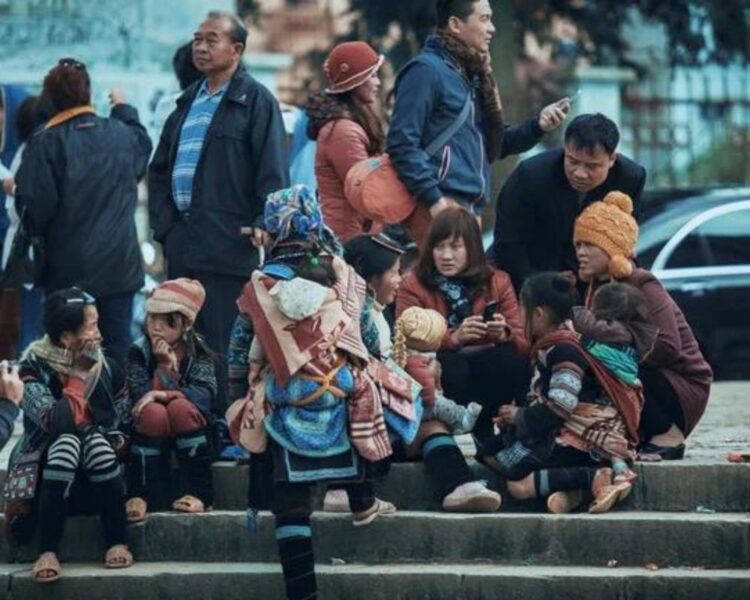
As we stroll through the marketplaces, let us embrace our inner adventurer and try some of the delicious delicacies offered by the locals. From savory noodle soups to fragrant grilled meats, there is something for everyone here.
While feasting on these scrumptious treats, take a moment to appreciate the intricate details of the woven fabrics or carved wooden figurines sold by skilled craftsmen. Soak up every bit of culture this valley has to offer before we move on to our next adventure – relaxing in the hot springs.
Relaxing In The Hot Springs
After a long day of trekking through the breathtaking Sapa Valley, nothing beats relaxing in the hot springs. With crystal-clear waters and lush greenery surrounding you, it’s the perfect way to unwind and soak up some sun. As you dip your toes into the warm water, take a deep breath and let yourself fully relax. Here are three things to add to your experience:
- Close your eyes and feel the gentle breeze on your face.
- Listen to the soothing sound of water cascading down from one pool to another.
- Imagine discovering hidden caves behind the waterfall as you enjoy this serene moment.
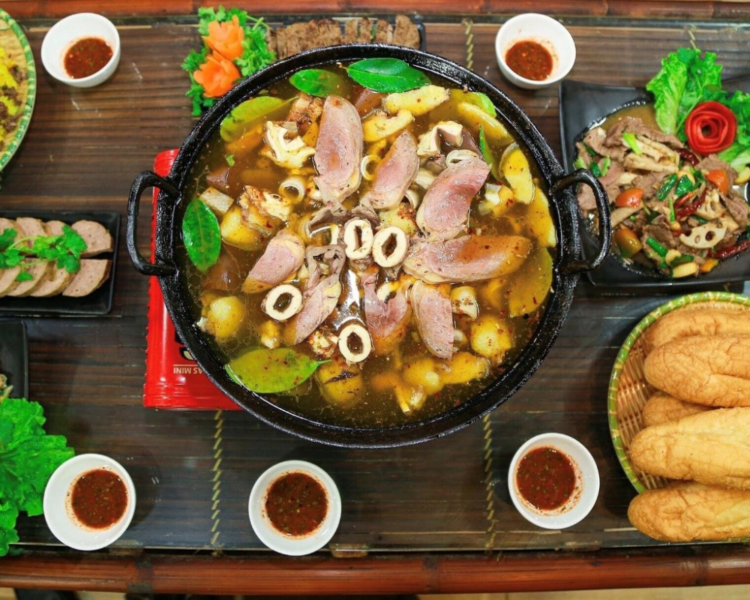
The hot springs provide an escape from reality, allowing for ultimate relaxation and rejuvenation. So why not indulge in this luxurious treat for both body and mind before taking a cable car ride high above the valley?
Taking A Cable Car Ride
As the cable car glides over Sapa Valley, taking in the breathtaking night views, one can’t help but feel a sense of wonder and awe. The twinkling lights from small villages below create a magical scene that seems almost otherworldly. It’s hard to believe that just moments ago we were trekking through rice paddies and mountains, immersed in the rich culture of this fascinating region. The cable car ride offers not only stunning scenery but also cultural insights as it passes over traditional Hmong and Dao villages. From above, you can see how these communities have adapted to life on steep hillsides with their terraced fields and unique architecture.
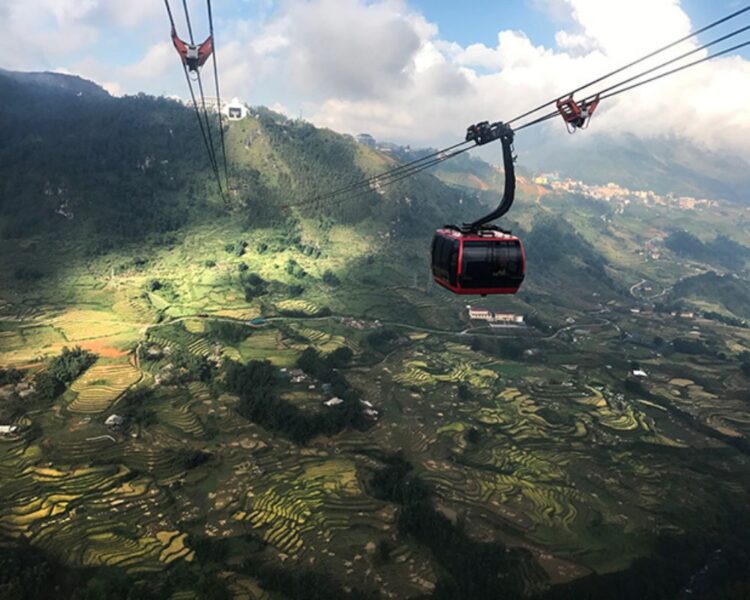
As we descend back into town, I am left with a deep appreciation for the resilience and ingenuity of the people who call Sapa home.
Vietnam Sapa Valley Frequently Asked Questions
What Is The History Of Sapa Valley And Its People?
The history of Sapa Valley and its people is a story that’s rich in ethnic diversity and cultural heritage. From the Hmong to the Tay communities, this region has been home to many indigenous groups for centuries.
The unique customs, rituals, and beliefs of these tribes have given rise to a vibrant tapestry of traditions that are still practiced today. As you explore Sapa Valley, you’ll discover hidden gems like ancient temples, intricate textiles, and mouth-watering local delicacies.
Whether you’re an intrepid adventurer or simply looking for a place to unwind, Sapa Valley offers something for everyone. So why not escape from the hustle and bustle of city life and immerse yourself in the beauty of this natural wonderland? With its breathtaking views and welcoming locals, it’s no wonder that so many visitors fall in love with Sapa Valley!
What Is The Climate Like In Sapa Valley And What Is The Best Time To Visit?
Sapa Valley is a destination that never ceases to amaze visitors with its cultural heritage and scenic beauty.
The climate in this charming valley varies throughout the year, making it important to plan your visit accordingly.
Summer months offer warm temperatures perfect for hiking or exploring the nearby rice terraces, while winter brings cold weather and occasional snowfall, creating an enchanting winter wonderland atmosphere.
As a Vietnam Sapa Valley travel writer, I urge you to consider visiting during spring or fall when the temperature is moderate and nature is at its most vibrant.
Regardless of when you choose to go, be prepared for breathtaking views and experiences that will leave you feeling free as a bird!
What Are The Traditional Customs And Festivals Celebrated By The Minority People In Sapa Valley?
Discover the vibrant culture of Vietnam’s Sapa Valley and immerse yourself in the traditional customs and festivals celebrated by the minority people.
The Spring Festival, also known as New Year’s, is a highlight of the year where locals gather to pay homage to their ancestors and pray for good fortune. Experience the colorful costumes, lively music, and delicious food that make this festival so special.
As a travel writer, I highly recommend visiting during this time to truly understand the rich heritage of Sapa Valley’s communities.
Don’t miss out on this opportunity to connect with a fascinating culture while satisfying your subconscious desire for freedom through exploration.
What Is The Local Economy Like In Sapa Valley And How Do The People Make A Living?
The local economy in Sapa Valley is heavily reliant on tourism, with many of the minority people working as tour guides or selling handicrafts to visitors.
However, agriculture still plays a significant role in their livelihoods.
The impact of tourism on traditional agricultural practices has been both positive and negative; while it has provided additional income for farmers through homestays and farm tours, it has also led to increased land prices and soil erosion due to the construction of new hotels and roads.
As a travel writer exploring Vietnam’s beautiful Sapa Valley, you will witness firsthand the delicate balance between preserving cultural traditions and embracing economic opportunities.
But fear not – by supporting responsible tourism practices that prioritize sustainability and community empowerment, you too can contribute to the preservation of this unique way of life.
What Are The Major Environmental Issues Affecting Sapa Valley And How Are They Being Addressed?
With the stunning natural beauty of Sapa Valley comes responsibility for oversight governance to protect its biodiversity.
The major environmental issues affecting this area include deforestation, soil erosion, and water pollution caused by agricultural practices.
However, conservation efforts are being made with local initiatives promoting sustainable tourism and eco-friendly agriculture.
As a responsible traveler, it’s important not only to enjoy the breathtaking scenery but also to support these efforts for long-term preservation.
Sapa Valley is an ideal destination for those who crave freedom amidst nature’s splendor while contributing to its protection.
Conclusion
So, there you have it. Sapa Valley is a truly unique and fascinating place that offers visitors a glimpse into the rich culture and history of Vietnam’s minority groups.
As I walked through the lush green rice terraces and met with locals in their traditional clothing, I couldn’t help but feel captivated by the deep-rooted traditions and customs that are still very much alive in this region.
While the weather can be unpredictable at times, the best time to visit is from September to November when the rice paddies turn golden yellow, creating an awe-inspiring landscape that will leave you breathless.
From colorful festivals like Tet Trung Thu (Mid-Autumn Festival) to daily activities such as farming and weaving, there’s always something happening in Sapa Valley.
And if you’re lucky enough to witness these events firsthand, you’ll undoubtedly leave with memories that will last a lifetime.
Despite facing environmental challenges such as deforestation and land degradation, efforts are being made by both local communities and government organizations to preserve Sapa Valley’s natural beauty for generations to come.
So why not add this magical destination to your travel bucket list? Trust me; it’s well worth the journey!
